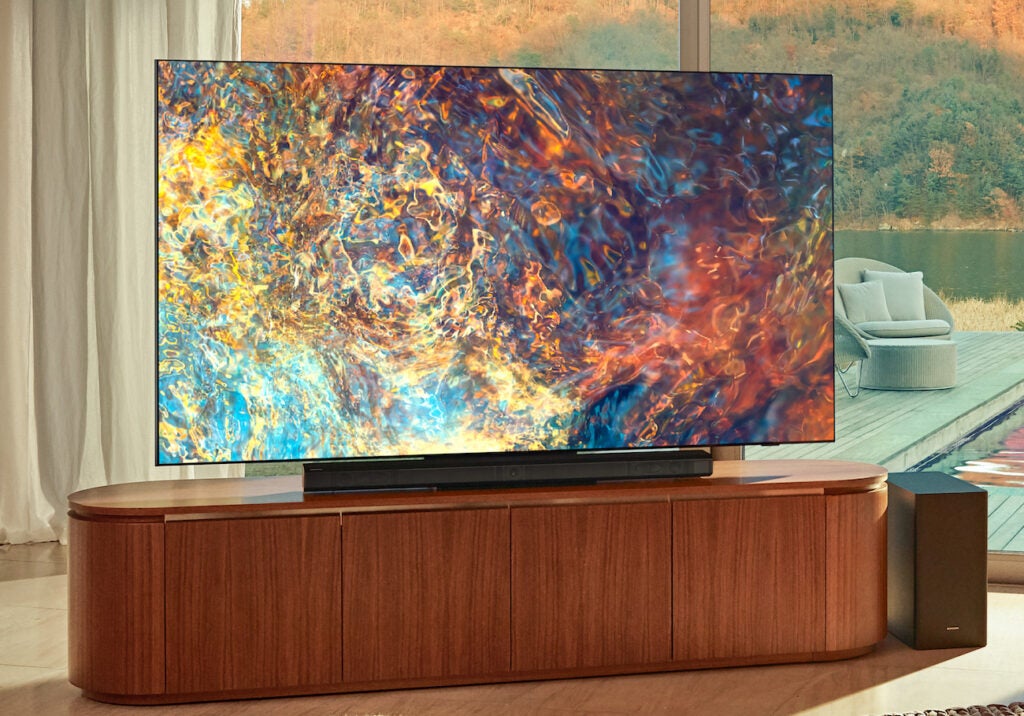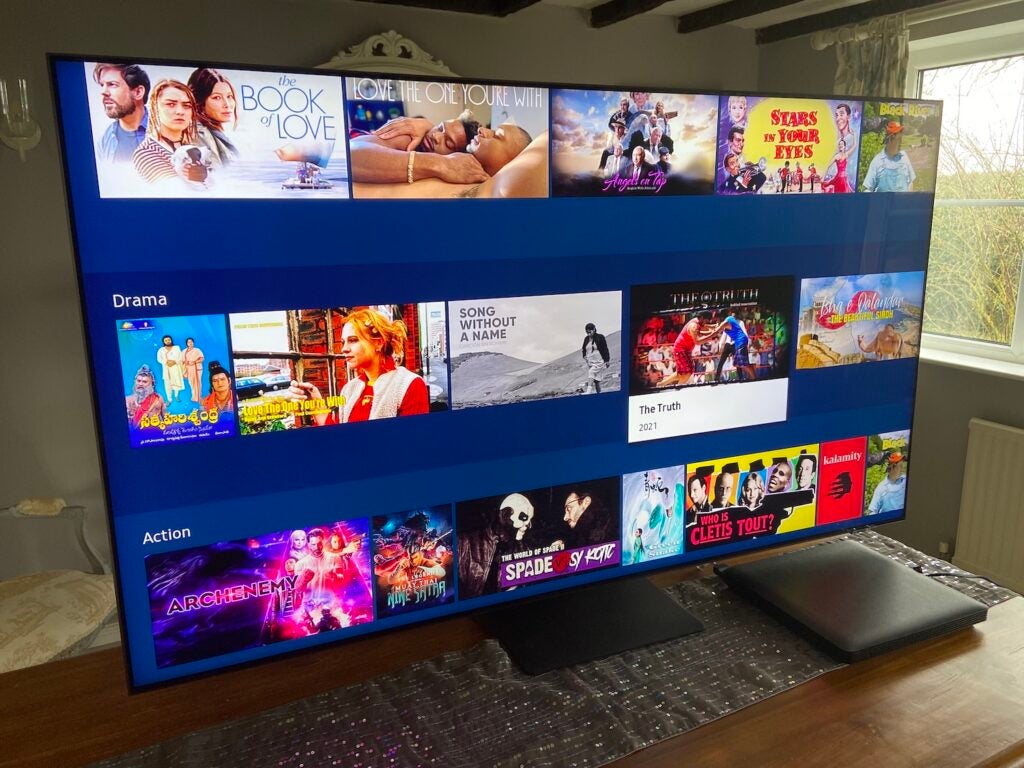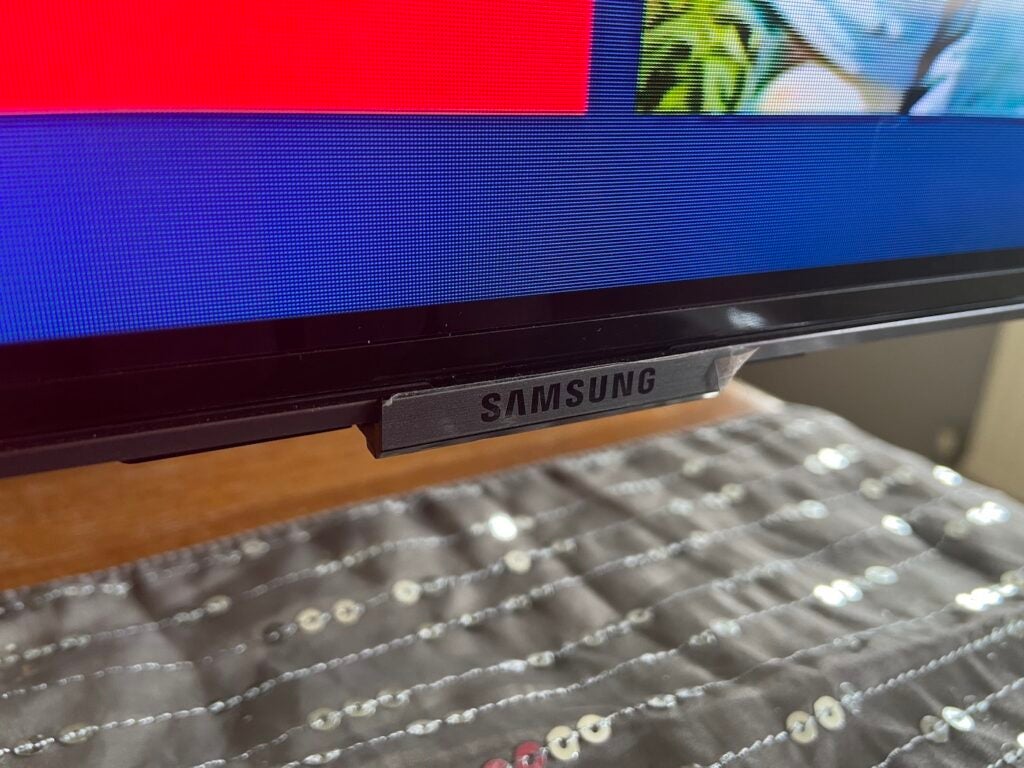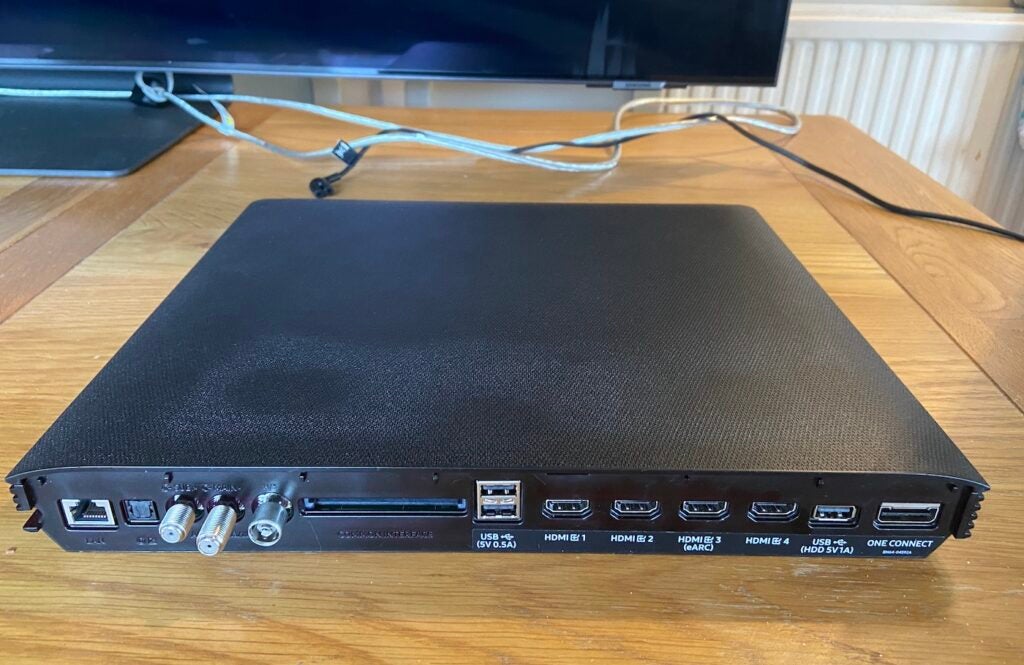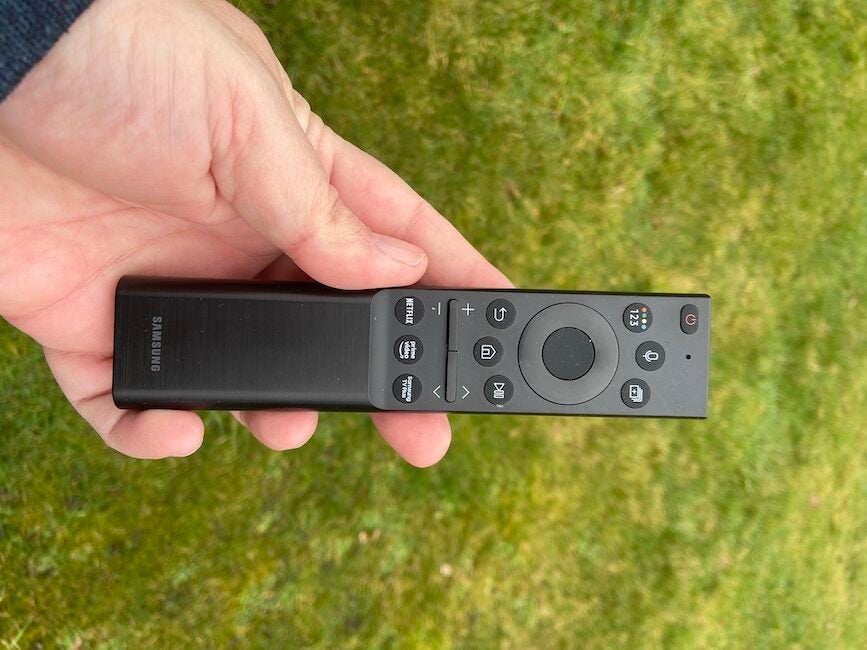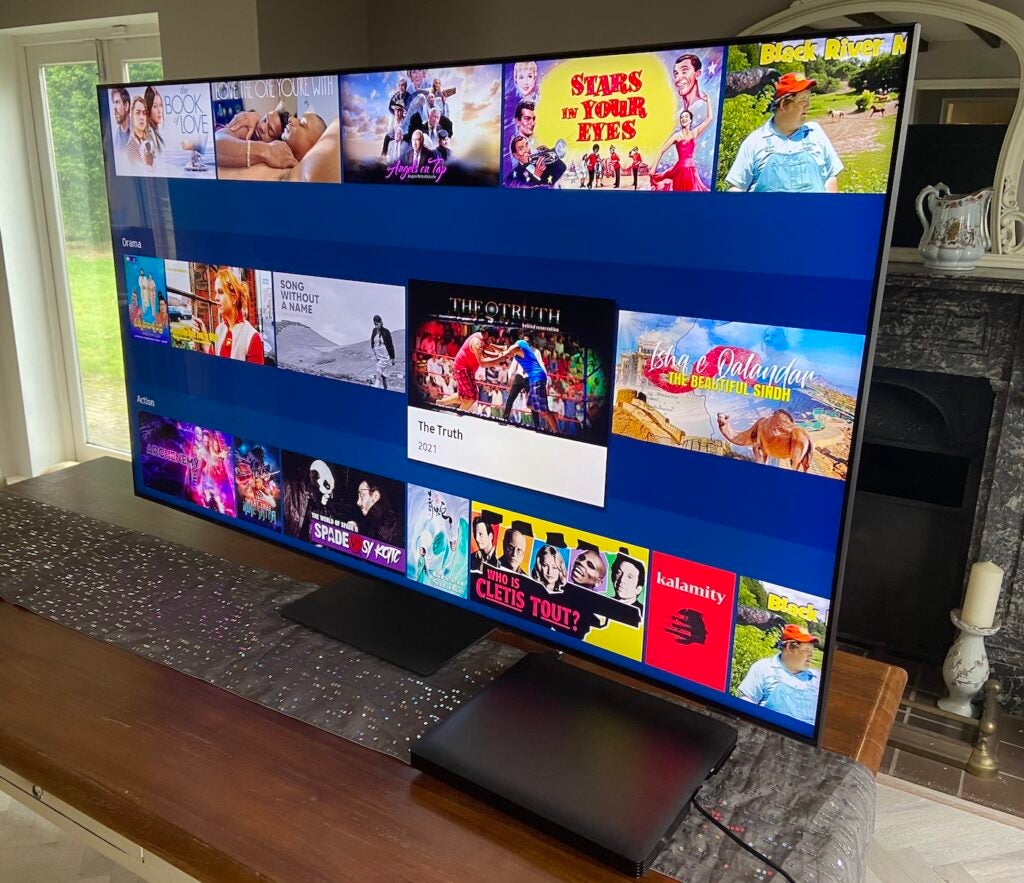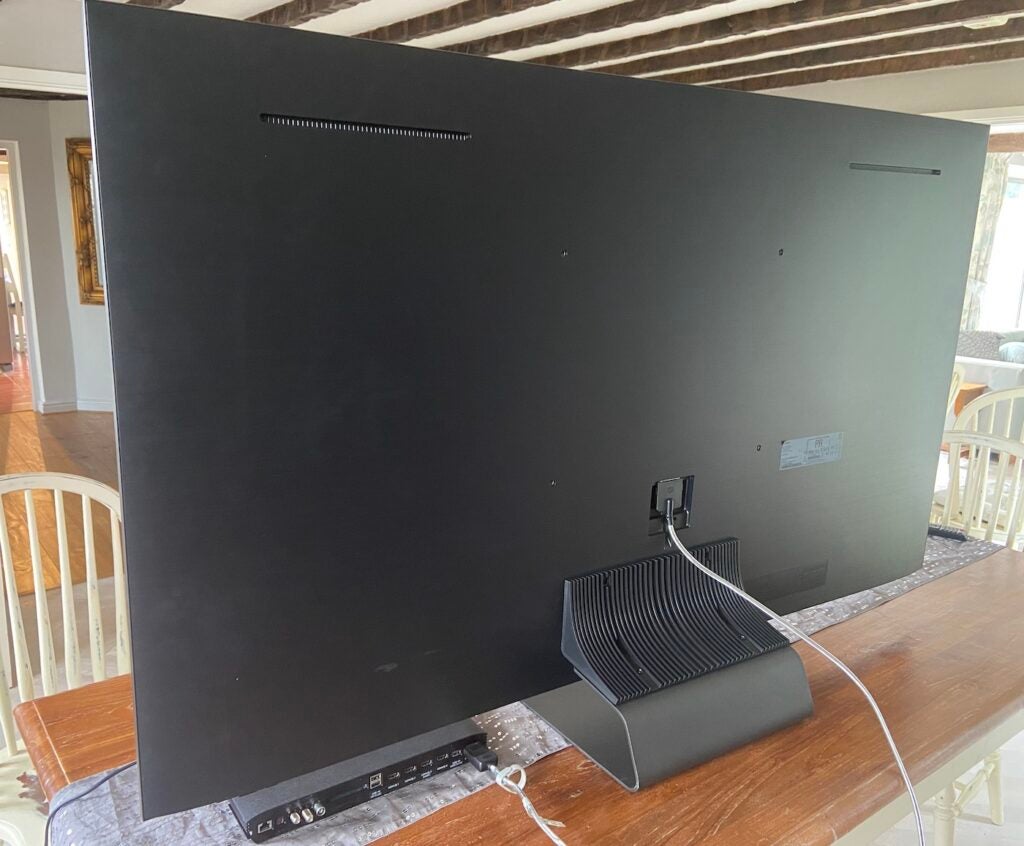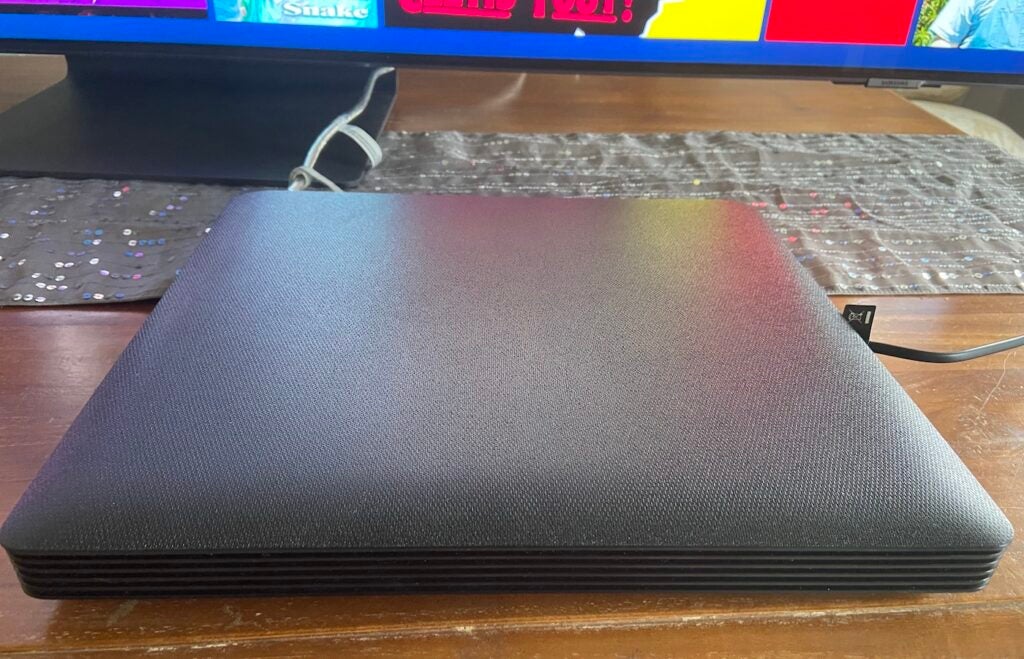Samsung QE65QN95A Review
Samsung's first Mini-LED TV kicks off the 2021 TV season in truly spectacular fashion
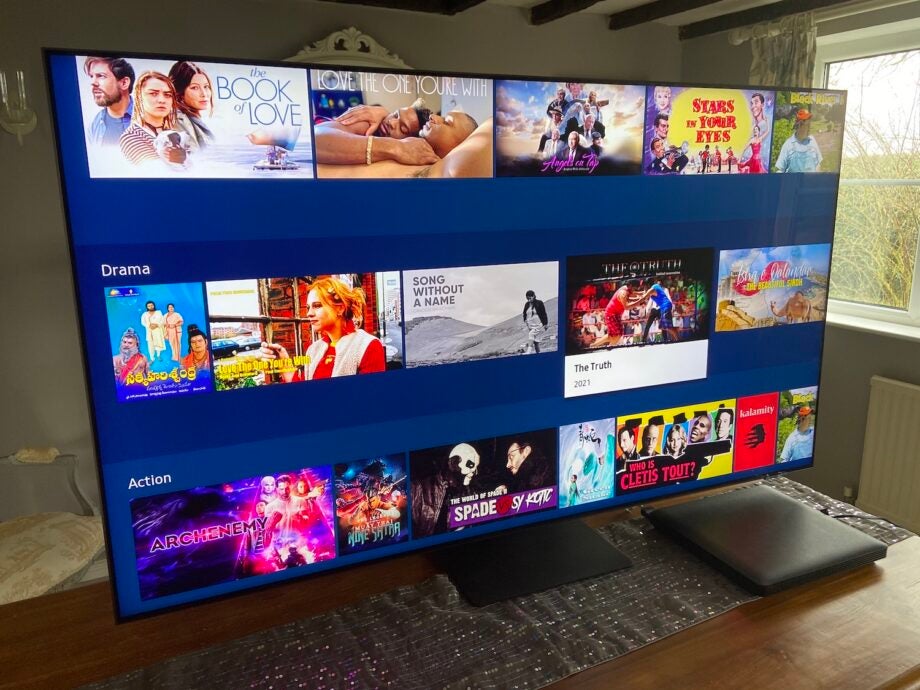

Verdict
The introduction of Mini-LED technology on the QE65QN95A has finally enabled Samsung to solve the conundrum of how to deliver great black levels and punchy bright highlights without one heavily compromising the other. Couple this with excellent new gaming features and another leap in the brand’s picture processing, and you have a set that truly feels like the start of a new TV era.
Pros
- Bright, sharp, colourful and – above all – contrast-rich picture quality
- An impressive roster of gaming features
- Sleek, well-built design
Cons
- Backlighting isn’t quite so fantastic in Game mode
- It’s expensive by 65-inch LCD TV standards
- No Dolby Vision support
Key specification
- HDR10, HLG, HDR10+
- Game mode with 5.8ms of input lag with 120Hz sources
- Native 4K resolution
- 65-inch LCD TV with Mini-LED lighting
- Four HDMI 2.1 ports via an external One Connect box
The Samsung QE65QN95A is their flagship 65-inch 4K TV for 2021 – a status it earns through a combination of a new Mini-LED backlighting system, a roster of new gaming features (including the world’s first FreeSync Premium Pro support), and a new video-processing engine that takes the impact of AI on TV picture quality to a whole new level.
Samsung QE65QN95A price and availability
The QE65QN95A is Samsung’s flagship 4K TV with a price of £2999 for the 65-inch model. In the US, the (nearly) equivalent model is the QN65QN90A ($2799), which ships without the One Connect box.
Samsung QE65QN95A design – Diminished depth makes the QN65A a more effective option for wall-mounting
- Ships with re-designed One Connect external box
- Impressively trim look
- Excellent build quality
The substantial, monolithic designs that have distinguished Samsung’s high-end LCD TVs over the past few years have been summarily dispensed with for the Samsung QE65QN95A. Thanks to Samsung’s switch to smaller Mini-LED lights, the company’s new 4K set is impressively trim round the back, making it a more effective wall-hanging option. It also gives the unit a more futuristic feel, especially since the screen bezel is also exceptionally narrow.
In addition, the QE65QN95A is pretty much a cable-free zone, thanks to its use of an external connections box. This ships all video sources, audio and even power to the screen via a single long, silvery cable – another boon for anyone considering wall hanging their new TV.
This isn’t the first time Samsung has used an external One Connect box with its premium TVs. However, the unit that ships with the QE65QN95A is much slimmer than previous versions, making it easier to hide away.
If you’re not wall-hanging the QE65QN95A, you’ll need to affix it to the centrally-mounted, heavy-duty plate-type stand provided, which angles gracefully back behind the screen to provide the necessary counterweighting.
The QE65QN95A ships with two remote controls. One standard – but very usable – button-filled effort, and a more streamlined “smart” remote. In a pretty cool nod to, well, the planet, the smart remote is powered by a solar panel on its rear side.
The build quality of every element of the QE65QN95A, bar the plasticky ‘standard’ remote control, is exceptional – as you’d hope with such an expensive TV.
Samsung QE65QN95A features – Seriously comprehensive
- All four HDMI support 120Hz refresh rates
- New Mini LED backlighting system
- Doesn’t do onboard Atmos decoding or Dolby Vision
The QE65QN95A’s biggest story is its adoption of Mini-LED technology. It isn’t the first Mini-LED TV the world has ever seen; TCL claimed that honour a couple of years ago. But it’s a new step for Samsung that sees the QE65QN95A able to deliver 792 separately controlled lighting zones. The brand’s 2020 4K flagship, by comparison, only boasted just over 100 such zones.
The idea that Samsung has been able to deliver such a colossal increase in dimming zones with Mini-LED technology looks even more remarkable when you consider that the QE65QN95A doesn’t cost more than its predecessor at launch.
Making the contrast potential of so many dimming zones all the more exciting is how bright the Samsung QE65QN95A is. In its (rather bonkers) Dynamic mode, it actually manages a mammoth 2700 nits of brightness on a white HDR window covering 10% of the screen. The screen only holds on to this extreme brightness very briefly, but it can certainly go there.
Even the much more sensible Standard picture preset still offers just over 2000 nits. And this time that level of brightness can appear on a much more sustained basis.
While the Standard mode is probably the preset that shows off most effectively what Samsung’s new TV is capable of, there are Movie and Filmmaker Modes too that provide more “accurate” images.
While I’d say the Samsung QE65QN95A delivers a pretty effective set of picture presets out of the box, there’s plenty of fine-tuning flexibility available if you want it. This includes full colour and white balance management, as well as a helpful combination of local dimming and contrast enhancement tools, and useful options for tweaking the TV’s motion processing.
In fact, motion processing is the one area I’d recommend tweaking when using the QE65AN95A’s Standard preset, since in its Auto setting it tends to generate quite a lot of digital side-effects. Much cleaner results can be had by selecting the Custom motion mode and setting the judder and blur elements to less than half of their maximum power.
The high number of Mini-LEDs in the QE65QN95A are driven by a new Quantum Matrix system that combines local light controls with enhanced power management – to ensure that more power goes to parts of the image that need it while less goes to parts of the image that don’t – and a new system for enhancing shadow detail.
In addition, Samsung has taken its “AI” processing to a whole new level for its new QLED models. The latest Neo Quantum processor incorporates the learning of no less than 16 different neural networks into its calculations of how best to treat incoming images, rather than just the single set of neural network results available to 2020’s Samsung TVs.
Gaming is now a huge part of any high-end TV’s potential duties, so it’s good to see Samsung pushing the boat out with a host of game-related new features. The QE65Q95A is the first TV from any brand, for instance, to support FreeSync Premium Pro – AMD’s system for delivering a better HDR as well as variable refresh rate experience.
There’s also a new Game Bar that, at the press of a button, brings up the current key settings you have selected on the TV, as well as the format of the gaming signal the TV is receiving. All of this is critical to ensure you achieve optimal performance in different games.
In addition, the Samsung QE65QN95A is the first TV to support gaming at the 21:9 and 32:9 aspect ratios that some PC games offer for players who want to get a wider field of vision.
Input lag – the time the TV takes to render received image data – is down to a measured 9.2ms in Game mode when fed a 1080p 60Hz signal. And this drops to just 5.8ms, if your console or PC is capable of feeding the TV a 4K/120Hz signal. These are ground-breaking figures that make it pretty much impossible for you to blame the QE65QN95A for any of your gaming failures.
There’s an option to introduce some mild judder reduction at the expense of only 5ms or so of extra input lag, as well as a black-frame insertion mode that still only ups input lag to a respectable 39ms or so.
There’s shadow detail adjustment, too, which you can use for increasing or decreasing the brightness of dark areas without impacting the rest of the picture. This can potentially help you pick out hidden enemies.
Arguably, the single best gaming news based on past Samsung experience is the provision on the One Connect box of four 40Gbps HDMI 2.1 ports. Just what the doctor ordered now that we have the Xbox Series X, PS5 and PC cards all pumping out graphics that need such high data rates.
Other connections include three USBs, Wi-Fi, an Ethernet port and Bluetooth.
Smart features are delivered by Samsung’s tried-and-tested Eden platform, now with content “shelves” that you can scroll down to from the home page. Inevitably, voice control/recognition is built-in too, with a mic provided on the smart remote.
Finally, there are two notable features that the Samsung QE65QN95A doesn’t have: support for Dolby Vision or Dolby Atmos. The former isn’t a surprise given Samsung’s preference when it comes to active HDR formats for its own rival HDR10+ system. It’s still missed, though, given its relatively widespread adoption in the content world, and its upcoming appearance on the Xbox Series X games console.
The lack of Dolby Atmos support is less important given how effective Samsung’s own OTS sound system is. However, it feels odd these days for a TV with a 4.2.2 speaker system to only pass through Dolby Atmos to external audio devices over eARC HDMI, rather than also being able to decode it itself.
Samsung QE65QN95A picture quality – Bright, colourful and contrast rich images
- High peak brightness for HDR
- Effective at suppressing blooming without reducing brightness
- Impressive contrast
Despite the fact that QE65QN95A’s version of Mini-LED don’t run into the thousands of potential dimming zones the technology is hyped as being capable of, it still delivers a substantial picture quality improvement over all previous Samsung LCD TVs. Maybe over all previous LCD TVs, period.
As you’d expect, the most immediate Mini-LED benefit can be seen in the screen’s contrast. Remarkably, the screen manages to combine the sort of colossal brightness figures mentioned earlier with inky blacks that are blighted by hardly any hint of blooming (light haloing around stand-out bright objects).
Samsung has long been known for the impressive black levels it can achieve from LCD technology. Its LCD TVs are also typically class-leading in their ability to suppress backlight blooming. However, suppressing blooming has previously depended on Samsung having to reduce – sometimes, quite heavily – the brightness of light objects that appear against dark backgrounds. With the Samsung QE65QN95A, however, bright objects retain most, if not all, of their potency without causing blooming, no matter how dark their surroundings, thanks to the enhanced light control provided by Mini LED.
Even when you’re watching a wide aspect ratio film with black bars above and below the picture, scarcely a hint of light leaks into the black bars.
This all contributes to a much more natural and immersive picture experience. One, moreover, that delivers levels of local contrast intensity that see dark scenes feeling as intense as bright ones in a way that you’d never expect to see from LCD technology.
Yet more good news finds the QE65QN95A achieving its remarkable contrast performance without compromising shadow detail. In fact, provided you avoid the Natural picture preset, the amount of subtle detail visible in dark areas is quite exceptional.
The Samsung QE65QN95A even delivers a marked colour improvement over last year’s Samsung models. Inevitably, the new sets continue to use the Quantum Dot technology the brand has championed for a number of generations now. This time round, however, that technology – now called Neo QLED, to mark the arrival of Mini-LED – seems able to maintain more fullness at extreme brightness levels.
Occasionally, a particularly rich red might look slightly pink, or a gold or brass tone might look a bit yellow when using the otherwise engaging default Standard picture mode. For the most part, the combination of brightness and richness is explosively gorgeous, even with the most aggressive HDR/wide colour content.
The spectacular impact of the QE65QN95A’s pictures is extended by their sharpness, too. Native 4K sources look immaculate: dense, crisp, clean and richly textured. The set’s enhanced contrast seems to add a touch more definition, too, while its colour management is subtle enough to combine the pure sharpness with complementary levels of colour subtlety. Especially since Samsung’s latest processor removes almost all signs of banding noise from fine blends.
Sticking your head up near the QE65QN95A’s screen reveals tiny horizontal lines running across the picture that marginally compromise the edges of extremely delicate curves or very small objects. Nevertheless, I really struggled to see this from a normal viewing distance.
Given that the marginal horizontal line structure is to do with the QE65QN95A’s excellent wide angle viewing and low reflectivity features, I’d say its pros comfortably outweigh its cons.
The QE65QN95A’s exceptional sharpness even applies to upscaled HD pictures. The new, more advanced level of AI Samsung has thrown at the upscaling process results in a remarkable combination of greatly enhanced detail and outstandingly reduced source noise. Particularly impressive is the upscaling system’s ability to spot the difference between natural film grain and other sorts of noise, so that natural grain isn’t just smoothed away by mistake. Even though heavy amounts of digital compression or mosquito noise are dealt with almost magically well.
Not surprisingly, the extreme contrast and colour capabilities of the QE65QN95A rein themselves in beautifully for SDR content. Although this set practically begs to be fed as much HDR content as possible.
My comments so far have focused on video playback; rest assured, though, that the QE65QN95A is a stellar gaming display, too.
The extreme brightness, colour volumes and sharpness it can deliver feel almost tailor-made for today’s 4K, HDR games. Especially when you’re playing a 120Hz title, where the sensational smoothness you get while panning around a gaming world lets you soak up the screen’s full clarity, and enables you to pull off heroic feats of extra accuracy and faster reaction times.
The QE65QN95A’s support for FreeSync, the HDMI 2.1 VRR system and (uncertified) NVidia G-Sync, also means that there’s no screen tearing or excessive judder during fast motion or pans.
Contrast, too, remains impressive for the most part in Game mode. Having said that, overall it isn’t as impressive as it is with video sources – presumably because the Game picture mode has to rein in the Mini-LED local dimming controls to hit its ultra-low levels of input lag.
As a result, dark areas in some games can look a little grey, and with the default FreeSync Premium Pro settings, you can sometimes also see signs of backlight blooming around stand-out bright objects not typically visible with video sources. This blooming can present as straight, “hard” edges, too, which makes it stand out more.
Fortunately, if a game exhibits grey-looking dark scenes, nudging the Shadow detail adjustment to -2 or -3 can help. As for the blooming in FreeSync mode, which seems to be exacerbated by the warm colour tone and strict luminance controls that the Premium Pro system demands, it can be greatly improved by choosing a cooler colour temperature, setting the Contrast Enhancer feature to High, and switching the local dimming to Standard (rather than high) or, even better, Low – if you can live with the brightness reduction it causes.
Samsung QE65QN95A sound quality – No slouching here
- Features Object Tracking Sound system
- Not as impactful as 2020 TVs
- Supports Q-Symphony soundbar feature
While the QE65QN95A’s star attraction is its Mini-LED-inspired picture quality, it’s no slouch on the audio front.
It carries a 4.2.2 channel arrangement, with 70W of total power. This is a step up from last year’s 4K flagship sound system, and is supported by Samsung’s Object Tracking Sound system, which makes sound seem to be coming from exactly the correct part of the screen.
It delivers a clean, detailed, nicely rounded and typically harshness-free sound even under the assault of a full-tilt action scene. The OTS system, too, does exactly as promised by not just placing sounds in the correct area of the screen, but audibly tracking any movement a noise-making object makes.
The QE65QN95A’s sound doesn’t have as much power, projection and bass impact as Samsung’s premium TVs from 2020 (which featured arrays of open drivers on their rears – as the brand’s 2021 8K TVs also will). It’s more than merely functional, though, and also holds its own/plays surprisingly nicely with Samsung soundbars using the brand’s Q-Symphony feature, which combines sound from the TV’s speakers with sound from the soundbar to generate a larger sound stage.
You should buy a Samsung QE65QN95A if…
-
You’re after a TV with a bright HDR performance: With Mini LED technology onboard, the QN95A is capable of hitting some searing peak brightness, as well as delivering contrast rich images
-
You’re in need of super-fast gaming with the next-gen consoles: Boasting just 5.8ms of lag at 120Hz and 9.2ms with a 1080p/60Hz game, the QN95A is seriously fast for gaming
-
You wall-mount your TVs instead of using a stand: The use of Mini LED tech has slimmed down the TV’s proportions, and with it also coming with the One Connect box, it’s better suited for wall-mounting than previous Samsung TVs.
You shouldn’t buy a Samsung QE65QN95A if…
-
£2999 sounds like a lot to spend on a TV: While the QN95A matches the price of Samsung’s 2020 flagship 4K TV, £2999 is a big investment by typical 65-inch TV standards.
-
You watch sources that use Dolby Vision: Samsung continues to give Dolby Vision a wide berth, so if you’re a subscriber to Disney+, Apple TV+ and Netflix, you’re potentially missing out on optimal picture quality. Many 4K Blu-ray discs support Dolby Vision, too.
-
You’re waiting to see what the latest OLEDs have to offer: There’s no doubt that 2021 looks set to bring us a bonanza of promising TVs. The new generation of OLED TVs will always pose a threat – especially the new higher-brightness OLED models we’re seeing from Sony and LG.

